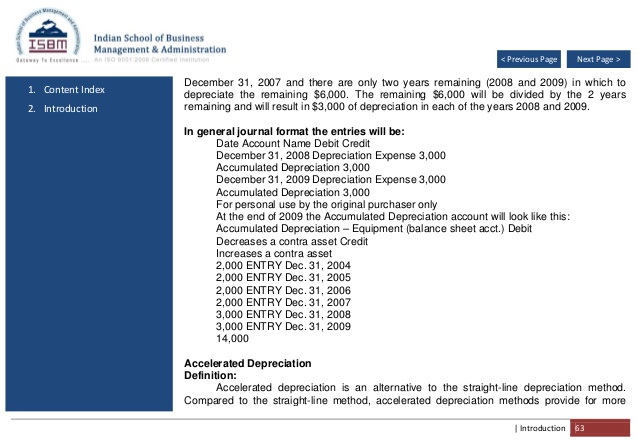
Often investors will be more interested in your gross revenue because it shows your businesses’ ability to generate sales and potential for growth. From the calculation of net sales, it can be inferred that the difference between gross sales and net sales is the returns, allowances, and discounts. In some companies, it might be difficult for a financial analyst to calculate the net sales barely by looking at their financial statements. The income statements will be further broken down into direct costs, capital costs, and indirect costs. If income statements look this way, then the net sales will be under the direct costs.

Based on your gross and net sales, you can see where to allocate spending, how much to allocate and where spending might not be necessary. This year we decided to attend Meet Magento in Miami, FL from Feb 15th-16th, 2023. It’s a great opportunity for us to visit with some of our existing customers, and future partners. The most comprehensive set of glossary terms in point of sale industry. Through Metorik, you’ll see both the terms Gross Sales and Net Sales used a lot.
Motivate your sales team
Nurture and grow your business with customer relationship management software. They’ll tell Battery Operated Light Up Hooting Garden Owl Pest Deterrent, LLC a lot about the state of their sales efforts and product quality. In this reality, the most in-demand product on the market is “The Battery Operated Light Up Hooting Garden Owl Pest Deterrent” from Battery Operated Light Up Hooting Garden Owl Pest Deterrent, LLC. Everyone wants one, and their sales team is working hard to meet that demand. You need to know both in order to expand strategically and ensure sufficient cash flow to support operations while growing the bottom line.
Gross sales are generally only significant to companies that operate in the consumer retail industry, reflecting the amount of a product that a business sells relative to its major competitors. A company may decide to present gross sales, deductions, and net sales on different lines within an income statement. When the order has been returned, the refund is credited to the customer’s account. Regardless of whether you’re able to resell those items again or not, the refund needs to be deducted from your gross sales and gross income.
Example of How to Use Gross Sales
This makes it difficult for externally facing analysts to identify the spread between gross and net sales. Therefore the metric is primarily used internally among corporate finance professionals in the CPM process. When charted over time, gross and net sales help identify if there are issues in the quality of a product and if the customer base is responding to it adversely. For example, if gross sales are high, but net sales are low and it is primarily due to returns then it helps analysts identify a need to increase product quality. Gross Sales are defined as a company’s total revenue generated from all transactions that occurred over a specified period before any deductions such as returns, discounts, and allowances.

Regarding the deductions in a company’s account, the three major ones we talk about are sales discounts, sales allowances, and sales returns. A sales return occurs when a buyer sends a product back to a seller for a partial or full refund. Most lenders, from your local bank to the SBA to online lenders like OnDeck, look at gross revenue as a minimum qualification requirement for small business loans. This means that like most investors, they want to know more about your potential for bringing in capital to your business. This helps lenders determine how much money is appropriate to lend to a particular business while using your business credit, personal credit, and cash flow to determine your ability to pay the loan back. You’ll want to make sure you understand your net revenue to determine how easily or difficult it will be to service the debt.
Knowing these things helps marketing and sales teams to tweak and optimize their strategies to improve these metrics. For instance, calculating your company’s net sales can help you to ascertain its gross profit margin. This is calculated by deducting the cost of goods sold (COGS) from your net sales. Sales discounts — in the context of reporting gross and net sales — are reductions in price a seller of a good or service offers a buyer for immediate or early payment. Businesses generally take this approach if they’re in urgent need of cash. For instance, a company may offer a 2% discount to a buyer for paying off an invoice within ten days of receiving it.
Do gross sales include tax?
You may need to adjust your pricing, amend your product features, or upgrade your product quality to gain a competitive advantage. Gross sales allow you to measure the total amount of revenue made by your sales team, whereas net sales are a better measure of performance, sales tactics and product/service quality. While it can be tempting to rely on gross sales as a measure of performance (as it’s always going to be equal to or higher than the net sales), it can be misleading. If you’ve had to refund most of those sales, you’re not using accurate sales numbers for your forecasting. Gross sales incorporate all of these deductions, while net sales are a company’s gross sales minus these three deductions.
In terms of gross and net sales, let’s say your gross sales for Q1 were $8,000, but over the same period of time, there were $700 in sales discounts – $200 in sales returns and $100 in sales allowances. This would give you a figure of $7,000 net sales vs. a gross sales figure of $8,000. While gross sales represent the total sales before discounts, returns, and rebates, net sales reflects Gross sales vs net sales the value of sales after accounting for those things. The difference between the two values is what helps analysts to determine the quality of income. Net sales helps to assess how many dollars in revenue stays with the business for every dollar in gross receipts. Net sales are the total of a company’s gross sales excluding its sales returns, sales discounts, and sales allowances.
What are net sales?
Net sales is the sum of your gross sales minus any deductions, such as discounts, returns and allowances (we’ll look at these deductions in more detail later). The closer your net sales are to your gross sales, the higher your profit margin. Understanding the gross sales metric is important for developing well-curated corporate performance management. This is because the message it conveys is simple and straightforward and it is a useful barometer for how the business is performing in its market over time. In this glossary term we will discuss what gross sales is, how to calculate it, why it is important, the difference between it and net sales, and how analysts use it when assessing a business.
Zepp Health Corporation Reports Second Quarter 2023 Unaudited … – PR Newswire
Zepp Health Corporation Reports Second Quarter 2023 Unaudited ….
Posted: Mon, 21 Aug 2023 10:15:00 GMT [source]
Gross revenue is extremely helpful for tracking your sales volume and ensuring that your company’s market share is growing and that your salespeople are hitting their goals. However, it provides little insight into your company’s overall profitability. Net revenue measures how much money your company brought in after accounting for all expenses in the same period. Many companies working on an invoicing basis will offer their buyers discounts if they pay their bills early. One example of discount terms would be 1/10 net 30 where a customer gets a 1% discount if they pay within 10 days of a 30-day invoice. Sellers don’t account for a discount unless a customer pays early so notations must be retroactive.
Sales returns allow customers to return an item for a full or partial refund within a certain number of days. For example, your company might send a customer an invoice for $10,000 to be paid within 30 days. However, you could offer a sales discount of 1% off if they pay within 10 days (this particular offer would be known as a 1/10 net 30 in discount terms). Sales discounts apply to any early payment discounts which are offered to customers when they pay an invoice within a specified period.
- While certain industries benefit more from the examination of gross sales, all businesses strive to have the highest gross sales they can achieve.
- Gross and net revenue are both regularly used in ratios and other metrics to indicate a company’s financial strength and performance.
- You could use these metrics to help steer this rep, and the team, in the right direction.
- Plotted over time, it can help to identify if the market is responding well to new products or marketing campaigns.
- When a customer pays for a product with a minor but noticeable defect, they may get in touch with the company they bought it from and request a retroactive discount.
This only includes the money generated by adding up all your sales figures into a single amount. Net revenue (or net sales) is defined by the US Securities and Commission Office (SEC) as gross revenue minus returns and allowances, such as sale promotions and purchase discounts. In effect, net revenue refers to the actual amount of money the company received at the end of the period. When these are taken away, what’s left is your net sales for a given period. Accounting for net sales can make it easier to determine other financial health KPIs. At the end of the year, that team’s sales are going to be reported on the company’s income statement.
Are Sales and Gross Sales the Same?
Deductions are important in understanding how well a business is selling its product or service. If you don’t consider them, you might not account for different strategies your sales team is employing or different ways they could be more efficient. While interest payments are another item that you’ll deduct from your gross revenue to calculate your net revenue, dividend payments usually are not. Those payments are deducted later in your business’s accounting process, after you’ve calculated net revenue. For sales teams, the biggest concern is if products are returned because they don’t meet the buyer’s requirements.

While certain industries benefit more from the examination of gross sales, all businesses strive to have the highest gross sales they can achieve. If we assume 4% of all transactions were returned, there was a total of 8k returns, meaning that the downward adjustment to gross sales is $320k. A point of sale system can keep track of gross sales and generate POS reports showing revenue. A POS system makes it much easier to keep track of business data for determining gross sales and more. If a customer made an order with a total of $80, the gross sales for that order are just that – $80.
On the other hand, a wrong calculation of net sales figures will not impact the calculation and accuracy of the gross sales figure. This is because of the fact that the gross sales figure is calculated before the calculation of the net sales figure. Knowing your gross sales helps you understand how product moves through your business, how much revenue your store is generating, and what your customers are purchasing.
